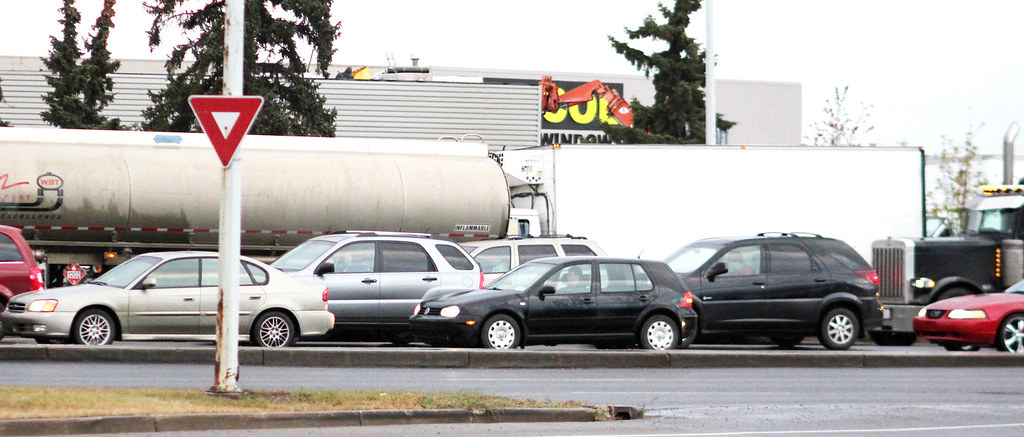ITS road system aims to help ease Yellowhead congestion
By Jeremy Jagodzinski
EDMONTON — A new traffic monitoring system that has never been tried in North America aims to reduce drivers’ troubles on Yellowhead Trail.
German based logistics company Planung Transport Verkehr has asked the city to test its new Intelligent Transportation System technology because of the unique traffic conditions along the Yellowhead. The goal is to prevent traffic jams, especially at key intersections in the busy west end.
“The biggest bottleneck is at 127 Street, so moving away from there, the congestion becomes less and less,” said Wai Cheung, the project’s chief engineer. “But 149 Street is still quite a major issue. It’s not something we’d want to ignore.”
Sensors embedded in the roadway will record the volume and speed of vehicles that pass overhead. They will determine exactly how many people are on the road and how well traffic is flowing.
Information gets relayed back to a downtown central ITS lab, where traffic controllers monitor everything so that they can override the system and take over for any of the automated components if they breaks down.
As the same sensor details filter into the lab, they’re plugged into software that keeps a record like a digital map of the section of the Yellowhead and all possible side routes and detours within the area that the ITS system is looking at.
The software runs the sensor input through its program and then sends its results to tools called Adaptive Signal Controllers that will cycle the traffic lights at various intersections to maintain the best possible traffic flow.
By combining a number of different high-tech tools, the hope is that an ITS test phase can be a benefit to the 70,000 daily commuters — 20,000 of which are commercial trucks — that funnel into the busiest stretch of the Yellowhead between 127 Street and Anthony Henday Drive.
The trail is a “parking lot,” said Andrew Olsen of Attica Furniture Restoration Ltd at the 144 Street mark of the Yellowhead. He believes all the semi-trucks are a real threat “to life and limb.” Anything the city is willing to try to improve conditions on the Yellowhead would be worth the effort, he said.
“It’s crazy. Never mind rush hour, it was backed up this morning at 9:30 am. Well, it’s just not moving enough traffic,” said Olsen. “The day the Yellowhead opened, it was already over capacity for what they expected it was going to carry 10 years later.”
The initial upgrades to the sensors near the Anthony Henday are a little over a year away.
Unfortunately, the opportunity to use all that the ITS has to offer won’t be possible for about two years when the second phase of the system will see BMW-engineered technology increase drivers’ chances of avoiding traffic issues through a more interactive experience.
“The next step is to have in-vehicle navigation that provides information to the city and takes information from the city,” said Cheung. “So not only do you provide your route to our system so that we can predict how many people are going to use that route as well, but now we can also feed back information right to the vehicle about incidents or alternate routes.”
Despite the wait, the ITS system is considered a less expensive and time-consuming option then transforming the Yellowhead. With the project still in its testing phase, the final cost is still to be determined. Nevertheless, ITS technology is still much more affordable for taxpayers than a freeway expansion project, which Cheung estimates would be in the billions.
The Alberta government has already made use of ITS technology in its Fixed Anti-Icing Spray system, which automatically keeps ice from forming on the northwest bridge deck of the Henday, and real-time updates of road conditions that are already available to drivers going to and from Edmonton on the QE2 highway.













very interesting